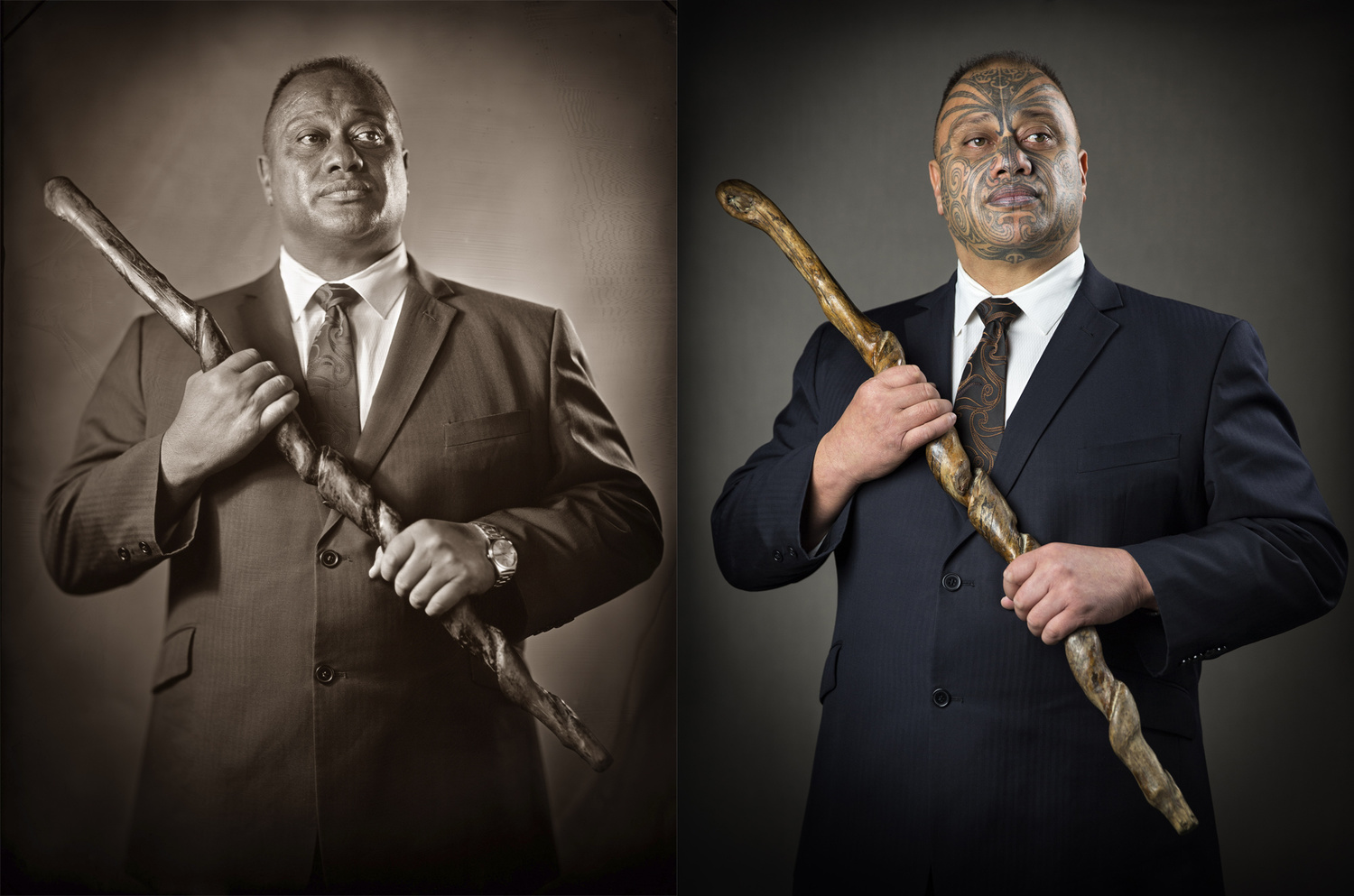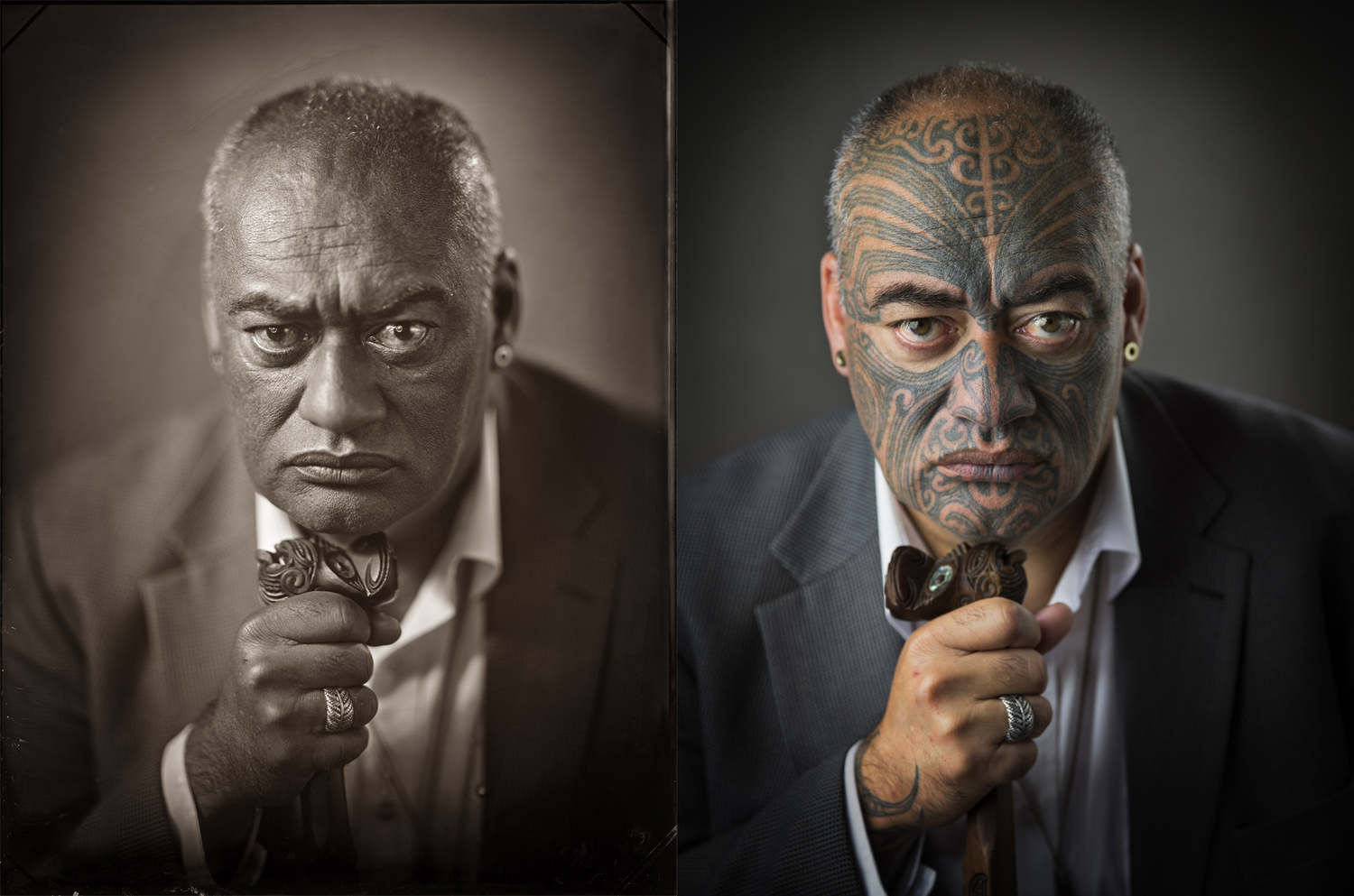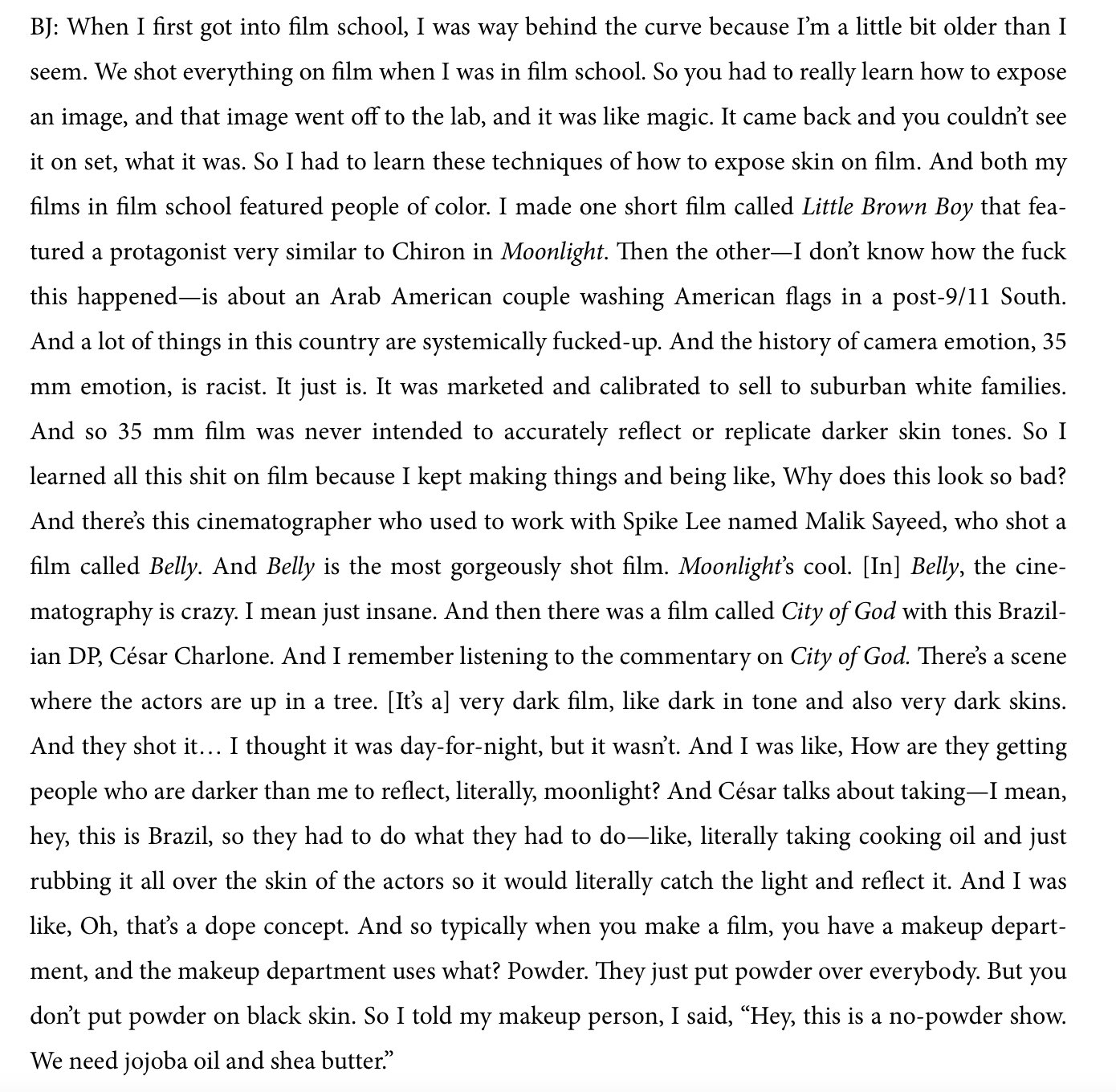Cultural Tattoos Invisible in Wet Collodion Prints
by
Michael B. StuartJuly 3, 2018
15 Comments
Facebook
Twitter
15 Comments
AD
A photographer has found an amazingly cool way to capture and honor the art of facial tattoos from the indigenous New Zealand culture the Māori. Using the wet collodion process, the subjects appear to have their ink magically removed in portraits hung next to modern digital photos creating a surreal before and after effect.
The permanent face designs are called tā moko. There is a very rich and cherished history of this tradition. In Māori culture, it is believed everyone has a tā moko under the skin, just waiting to be revealed to the world. Members of the society without the markings were considered of a lesser social status. Receiving the moko was an important milestone in becoming an adult. It was also desirable because they were believed to make oneself more attractive to the opposite sex.
Traditionally the designs were actually chiseled into the skin using a tool called a uhi, as opposed to being punctured like a modern ink based tattoo gun. This means although the pigment of the ink appears invisible in the historical
wet collodion photos, you can still see the texture and grooves made by the application tools if you look closely enough. Most of the Māori will opt for the convenience and effectiveness of modern day tattoo tools these days so the disappearance is drastic.

All photos used with permission by Michael Bradley.

All photos used with permission by Michael Bradley.
Photojournalist Michael Bradley learned of the cultural tradition and how it was all but lost after European colonization in the 1850s. The only photographic records showed no tattoos except for those added beforehand with makeup or after by drawing on the photo itself with pen or pencil. He became fascinated with the way the fading of the tattoos in the wet collodion prints mirrored the traditions prominence in the culture. As time went on, fewer and fewer Māori were wearing the markings as they tried to fit into the new society around them.
Luckily, the act of getting the tā moko made a comeback and the art is experiencing a revitalization. Bradley sympathized with the struggle to preserve an important element of Māori culture and found a wonderful trick to display it in a unique way. His project is called "Puaki," which means "to come forth, show itself, open out, emerge, reveal, to give testimony."
Try out this slider below to reveal the designs hidden by the wet collodion prints. Please note, they are completely different shots and not a Photoshop effect so the subject is not in the exact same position or angle.
Bradley was fascinated by the fact that the analog photographic process, widely thought of as genuine and authentic, showed a twisted version of reality.

All photos used with permission by Michael Bradley.
This exhibition forms an important social documentary of the people who choose to proudly wear tā moko today embracing their history and showcasing one of the many endangered traditions still holding strong in today's modern society. Twenty-three participants have their portraits shown side by side. Prints shot with an 85-year-old wet collodion camera were displayed on the left, and a photo captured on a modern camera on the right. Being a trained photojournalist, Bradley felt it was important for the portraits to be as authentic as possible. For this reason, each subject was able to select their own outfit and pose. Bradley even went on to
record videos speaking about behind each individual's story and meaning behind their tā moko.
The exhibition is hosted at the
Kōngahu Museum of Waitangi in the Bay of Islands, New Zealand. It started on May 26, 2018 and runs until September 2, 2018. Below is the video from the opening reception. Many of the subjects from the photos we there for the event and appear grateful to Bradley paying homage and respect to their cherished tradition.
As is often the case with personal projects like this, I found myself very impressed with the story behind the photos. Bradley took something that moved him and went head first into finding a way to share it with the world. This is certainly a great example of how you get from taking beautiful photos, to having people stop what they are doing and look at what you have created.
Bradley's work can be seen on his
website,
Facebook,
Instagram, and
Twitter.
All photos used with permission by Michael Bradley.












